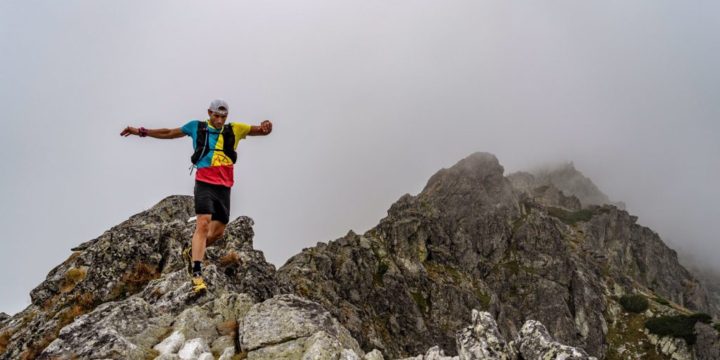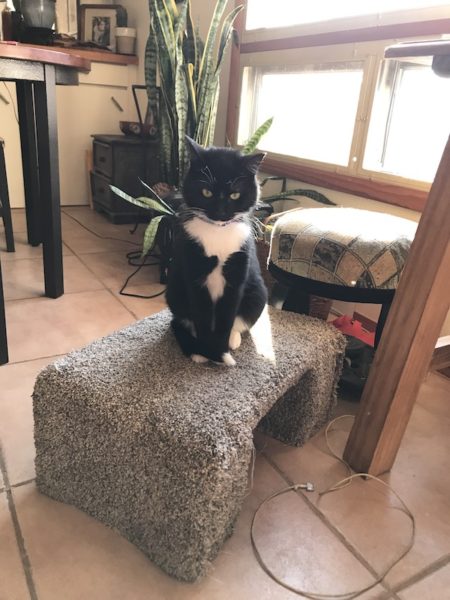
How I Fixed My Knee Pain
As a 70 year old paraglider, I came upon the podcast you did with Gavin. It was really easy to connect with your perspective on life’s challenges, and also hope that your one wish comes true. Fantastic talk!
As a lifelong outdoorsman, I am struggling with knee problems. I would appreciate it, if you could point me out to a website, that explains the “5 easy steps” that your physical therapist had you do, to get rid of your knee problems.
Thank you and enjoy this beautiful life.
Patrick
Hi Patrick,
Thanks for your email! A lot of people keep asking me about the exercises Andrew Fast gave me (that’s him in the header photo: he’s a badass). If you live near Salt Lake City, I highly recommend going to see him at Mountain Land Physical Therapy in Mill Creek: I can’t emphasize enough how much it’s worth it! He was able to solve my problems by sending me home with exercises to do on my own, after ONE visit, and this was after struggling with knee pain for 10 years! Everyone is different, and my knee issues may not be the same as yours, so spending half an hour with someone really good can save you literally years of wasted time–a decade, in my case.
I’ve been a trail runner since I was 20 and though I never did huge distances (I did one 50K in 2002), I normally ran 20-30 miles a week, with a lot of up and down. In 2009, I tore my left ACL and had a double bundle hamstring graft. I went to a physical therapist in Moab after surgery, and they told me to do basic quad and hamstring strengthening exercises in the gym, so I went to the gym for about 2-3 hours a day for the first 9 months after surgery and worked on those things. During my recovery, I also ran short distances on flat dirt roads, because my surgeon said in-line motion was okay, just no hills or uneven terrain. Then I gradually returned to my regular hiking with a pack and some trail running. After a couple of years, I noticed a low-level pain behind both kneecaps when running. I went back to my surgeon because I was nervous, and he told me the cartilage was rough behind my kneecaps, and as a result, impact made it hurt although wasn’t causing any further injury. That pain was not enough to stop me from running, but it really made it less fun. If I ran consistently (daily or every other day), it got bad enough I had to stop running again. It always hurt a lot when walking downhill with a pack but still never enough to really stop me from being in the mountains. By 2018, it was bugging me enough that it was starting to hurt even when walking uphill. I stopped running and started doing steep hikes only as my cardio fitness. And I figured maybe I needed to do some leg work in the gym (normally I focus on upper body strength for climbing when I lift weights) since I wasn’t running anymore. I started doing deadlifts (which I never do), squats and lunges a few times a week, and I noticed I was feeling less knee pain on my hikes. I tried using some KT tape too and it helped enough that I started trying to run a little again. At this point, my brother (a doctor in Salt Lake) told me he thought Andrew could potentially help me and I should go see him, so I went to see him last spring. I honestly had pretty low expectations because I figured the pain was due to all the years of beating on my knees. The first thing Andrew said, after assessing my muscles and my gait, was “this is totally fixable.”
In my case, and again it is most likely different for different people, I had never really come back to full strength in my hip flexors, hamstrings and glutes after my ACL repair–and maybe I never had it to begin with, which could be why I tore my ACL? Who knows? Anyway, basically every time I set my foot down, my kneecap was able to move slightly instead of staying straight inline, and this motion was causing pain. Additionally, I had always had a tendency to walk with my toes turned out, and by walking and running that way even more, I was avoiding using my hams and glutes as much, but putting even more pressure on my kneecaps out of alignment–this is something I realized after watching the video Andrew took of me on a treadmill and deciding to change on my own, by literally force-changing my gait to toes straight forward all the time (he did not tell me to do that, because I think physical therapists hesitate to tell people to change their gait, but doing this helped me a ton). It felt really awkward at first and I literally nearly face planted on my first trail run, but I was shocked at how much more I was engaging my hams and glutes when I deliberately placed my feet straight rather than out-turned. It’s a very strange feeling to change something like this and I often feel like I’m walking and running pigeon-toed now, but I’m actually not.I believe you can change anything you want though, even something this fundamental, and it’s amazing how fast you can change something that’s such a powerful habit if you just start doing it.
Andrew gave me several exercises intended to strengthen my hip flexors, hamstrings and glutes, so I think you could probably substitute a lot of different options with things you find on the internet, because there are many ways to target these groups, but I’ll put some links I found below that are similar to the things I was doing. I did the rubber band exercises every day for the first two months, then 3 times/week for another 4 months. I did the ball exercises and the step downs every other day for the first 6 months. At first I couldn’t do the hop exercises he gave me because it hurt my knees, and he told me to be very judicious with those. After a couple of months, I found I could do them without pain, but I didn’t do them a lot. The metronome treadmill runs I only did in the first week, and Andrew said that’s all that would be needed to “reprogram” my gait. I noticed an improvement in just the first couple of weeks: I went on a short trail run after the first few days of this and didn’t feel knee pain, which I literally couldn’t believe! It has been 10 months since I went in to see Andrew, and now I’m running 2-3 miles 4 times a week, and 5-7 miles twice a week. No knee pain, and I’m not doing the physical therapy anymore, though I still do one-leg squats a few times a week, because I like those.
Rubber band exercises:
This was a big one: I would hold the fire hydrant pose for 30 seconds and then do 30 kick motions with the same leg. Then switch legs, and do a total of 3 sets per leg.
The other one was this: Check out the “standing glute kickbacks” photo in this article https://www.outsideonline.com/2397255/best-resistance-bands-exercises-legs
Instead of kicking back, I kicked to the side. I did quick in and out steps for 30 seconds, and then removed the rubber band and stood with one leg slightly bent and then drew half circles with the other toe from front to back to front (like a ballet dancer), for a total of 15 circles. Repeat with the other leg, and do a total of 3 sets per leg.
The small rubber bands come in yellow, green, and some other colors depending on resistance level. I started with the yellow band but quickly changed to green. I carried it around with me, and it was easy to do these exercises anywhere if I was camping, or at home or in the gym.
Exercise Ball:
I did 1A, 1B and 3B in this link: https://www.mensjournal.com/health-fitness/swiss-ball-workout-strong-glutes-and-powerful-legs/3b-single-leg-glute-bridge/
I did 3B at home, and 1A/1B in the gym where they have a ball.
Step Downs:
This was a really big one for me: you can do this outside on a rock or a tree stump or a curb, so I was doing it everywhere 🙂 Just remember to touch the ground with your heel, not your toe. This is training for eventually doing a single leg squat, which is awesome!!! At first I did 3 sets of 10 on each side, but would gradually increase the reps and also try to increase the height of the platform. I made a very small platform at home out of 2x4s and plywood, and eventually stapled some carpet on it so my cats can play on it.
https://www.google.com/search?q=step+down+one+leg&oq=step+down+one+leg&aqs=chrome..69i57j0j69i64.3450j0j7&sourceid=chrome&ie=UTF-8#kpvalbx=_o9tNXqPnCMjq-gSJoIn4Ag29

Metronome treadmill runs:
I believe this helped fix my sloppy gait and caused me to run with my feet more straight (I also made a conscious decision on my own to change how I walk and run all the time). I only did this 6 times total, running on the treadmill for 5 minutes with a metronome app on my phone. The metronome speeds for the sessions were: 163, 165, 165, 168, 173, 173
Hops:
These I didn’t do much in the beginning because they hurt, but over time I found I could do them. I still did them very little, because I didn’t want to be too aggressive. Stand on one foot and pick a spot on the floor a couple feet away from you. Hop toward the spot like you’re going around a clock face–hop in from each number on the clock, but always land on the spot in the center. Also, do 2-3 pretty powerful jumps forward, starting with 2 legs and landing on 2 legs, then 2 legs landing on 1 leg, then 1 leg landing on 1 leg, then 1 leg landing on 2 legs.
Ultimately I can’t see how doing these exercises could be BAD for you (but you never know, remember I’m not a doctor or a physical therapist!!!), so I guess you could just try them out and see if they help at all? For me, I learned that going to the right physical therapist can literally save you years of pain and compromising on activities, so I would probably either go directly to Andrew or else get a recommendation for someone very good who’s in your area, and go to them at least once in person.
One final note, I also switched to Altra Lone Peak running shoes with green Superfeet in them. These have been great.
Good luck!
Steph







